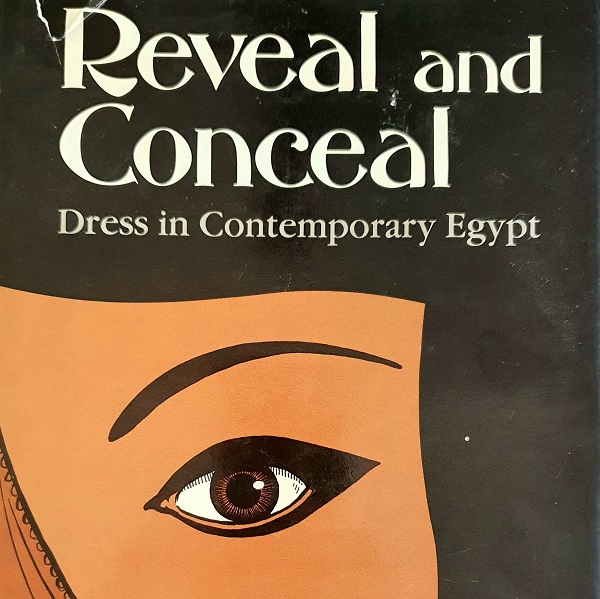Authors: Andrea B. Rugh
Photographer: William A. Rugh
Illustrator: Elizabeth Rodenbeck
Publisher: Syracuse University Press, NY, 1986
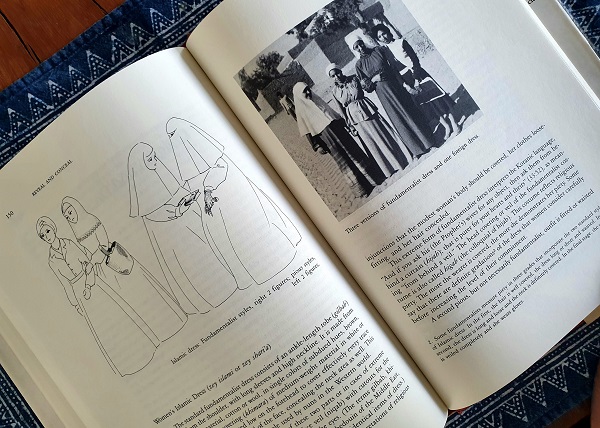
Format & layout
185 x 260 x 18 mm (7.3" x 10.2" x 0.7”)
Hardcover
181 pages
ISBN 0-8156-2368-2
Text and images on a white background
English
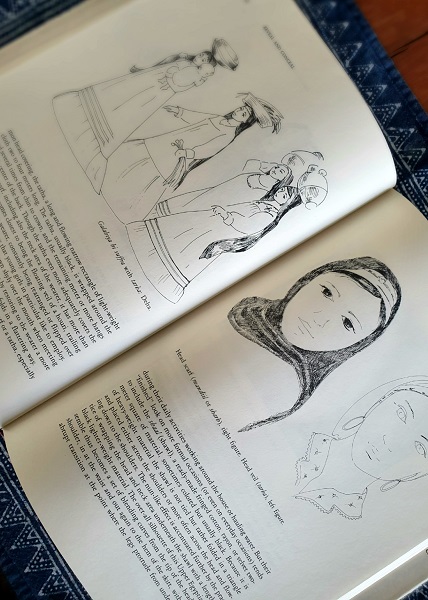
Photos, Illustrations & Diagrams
The book is well illustrated with hand-drawn sketches and black-and-white photographs on most spreads. Although this is obviously an academic book, the illustrations and photos lend a field-guide aura to the book and help the reader to appreciate the hands-on, in-the-field research done by the author.
There are no maps.
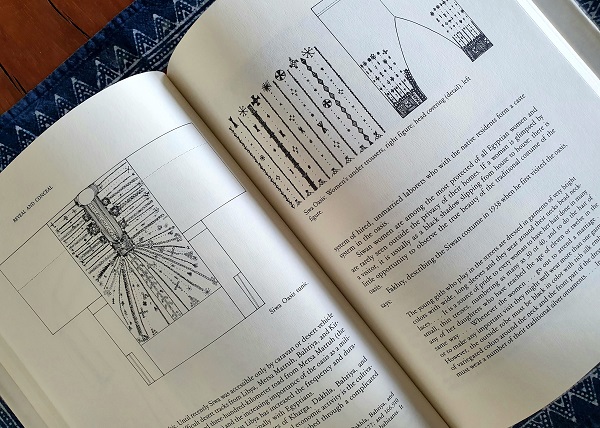
Introduction
“The book that results from these travels has limited objectives. It is not an attempt to catalogue Egyptian traditional costume in minute detail, either as it exists now or existed in the past… …The present book, instead seeks significance in contemporary dress to discover meaningful categories, conscious and unconscious, that underlie its clusters of features, and t learn more about the inherent features in the dynamics of dress that set up self-limiting constraints on its usage.”
Extract from Preface, p.ix
The book was published in 1986, yet most of the research was done in the middle to the late 1970s while Dr Rugh was living in Cairo. She was conducting other anthropological research in the lower-class urban quarter of Cairo that attracted migrants from rural areas all over Egypt when she noticed how the local women were able to glean a considerable amount of information about strangers based on the way they were dressed. This intrigued her and she set out to systematically trace the patterns of dress throughout Egypt
“unwinding in effect, the tangled web of costumes from the Cairo quarter, back to the single strands of their beginnings.”
The result is this book, rich in information about clothes, but also about people, societies, relationships, and human nature.
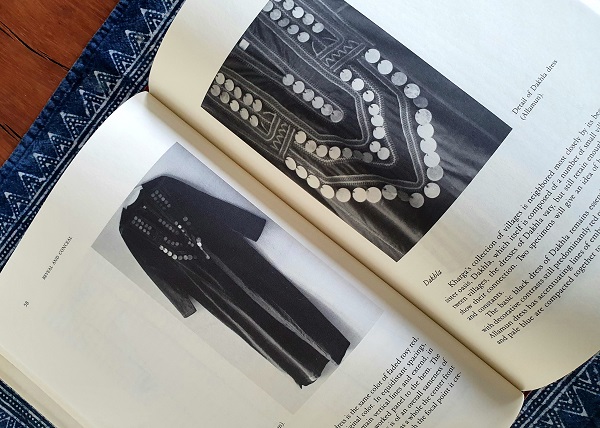
Content
The book is divided into eight chapters, bookended by a Preface as well as a bibliography and index at the end.
“The first section of the book explains the conceptual rationale for the work and outlines the general types of dress in Egypt and their basic components. The second section catalogues the geographical and community understandings that are delineated by clothing, and which constitute the broad sets of dress conventions within which individuals must make their choices. In the third section, individuals are shown manipulating elements of personal identity and status in their dress. The conclusion discusses the dialectic of dress symbols in Egypt in both geographical and historical context.”
Flap text.
The chapters are:
- Reveal and Conceal
- Folk Dress
- Geographical Understandings in Folk Dress
- The Nile Valley and Oases
- Desert and Coastal Dwellers
- Presentation of Self
- Religion and Dress
- The Dialectics of Dress in Space and Time
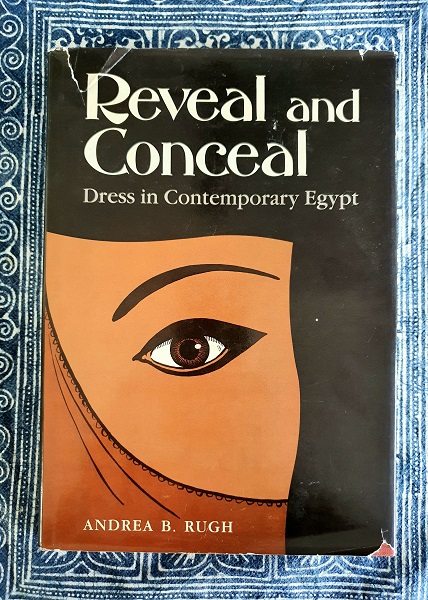
Conclusion
There are a few things that stand out in this book. Although this is a dense book, it is a wonderful combination of scholarly writing and an approachable, easy-to-read narrative. Each chapter is rich with facts and technical information about the garments and customs. It is divided into sub-headings and interspersed with illustrations and photos.
It is evident that the way people dress was a direct result of not only the society they live in but also the geographical area they lived in. Dr Rugh took great care to put everything she learned about these garments into social, geographical, religious, and historical context.
The book has been published 35 years ago based on information that has been collected over forty years ago, making this a unique record of not only a dress style but also a lifestyle that does not exist anymore. The book does not only record history, it is part of history, and an important contribution to the preservation of the dress heritage of the Arab world.
As is evident in the image above, our copy has been well used over the years and is considered an important resource in The
Zay
Zay: (Arabic: costume, Pl. azyaā’), a set of clothes in a style typical of a particular country or historical period. Initiative library.
More information
- Dr Rugh has been a guest on our webinar series in March 2021 where she discussed symbolism in Egyptian dress based on her research for this book. Friends of the Zay
Zay: (Arabic: costume, Pl. azyaā’), a set of clothes in a style typical of a particular country or historical period. can access a recording of that webinar here.
- An interview with Dr Angela Rugh by our guest contributor Dr Sophie Kazan, can be read here.
- Dr Sophie Kazan also interviewed Shahira Meghrez, a specialist researcher and collector of Egyptian dress here, and a webinar recording of her conversation with Dr Reem can be accessed by becoming a Friend of The Zay
Zay: (Arabic: costume, Pl. azyaā’), a set of clothes in a style typical of a particular country or historical period..
- A series of posts about garments from the Siwa Oasis in Western Egypt by our guest contributor Jackie Barber can be found here, here, and here.
- Jewellery historian Sigrid van Roode’s post about Jewellery from Egypt can be found here.
- Egyptologist Dr Colleen Darnell’s conversation with Dr Reem about Magic and Jewellery from Egypt can be accessed by becoming a Friend of the Zay
Zay: (Arabic: costume, Pl. azyaā’), a set of clothes in a style typical of a particular country or historical period.. A blog post about this conversation can be found here.
- The Zay
Zay: (Arabic: costume, Pl. azyaā’), a set of clothes in a style typical of a particular country or historical period. Collection includes several items of Egyptian clothing and can be accessed here.
Buy your copy of the book
here.




